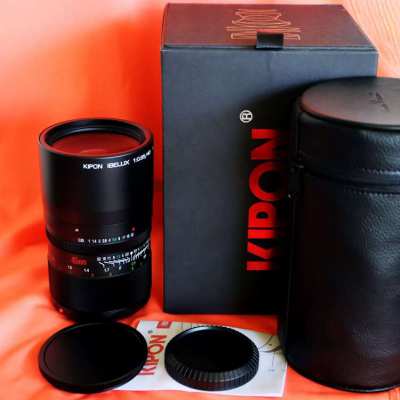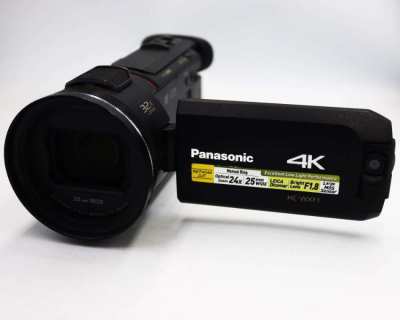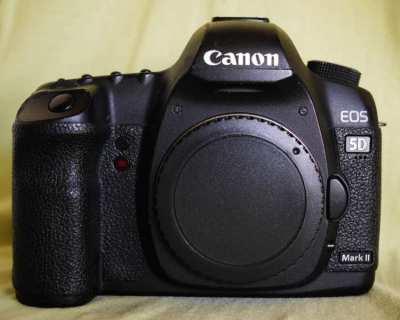Canon EOS RP Full Frame Vlogging Portable Digital Camera
- Pattaya City Central
- 16 May 2024 : 14:30 pm
- ID: 521404
Ad Description
https://www.youtube.com/watch?v=-2dvXMGB9Bc
Made in JAPAN.
Thai / English + menu.
S/n: last photo.
Camera body, Canon Battery, Canon Charger, body cap, Canon Strap, User Manual, Box.
About this item
● Lightest, smallest full-frame EOS camera
● RF mount compatible with RF lenses and EF/EF-S lenses with optional mount adapter
● High image quality with 26.2 Megapixel Full-frame CMOS Sensor and DIGIC 8 Image processor
● Dual pixel CMOS AF for fast and accurate auto focus
● Use the EOS Utility Webcam Beta Software (Mac and Windows) to turn your Canon camera into a high-quality webcam, or do the same using a clean HDMI output.
EOS RP (Body)
Reimagine Your Potential
Being Canon’s lightest Full-Frame Mirrorless Interchangeable Lens Camera with EVF, EOS RP has a 26.2-megapixels CMOS sensor and shoot 4K UHD videos*. Dual Sensing IS made possible with RF mount technology and DIGIC 8 processor, providing up to five stops of shutter speed for still images.
Fleeting moments caught with 0.05secs AF time, low-light focus limit of EV -5, Eye Detection AF (Servo AF) and 4,779 selectable AF positions, powered by the Dual Pixel CMOS AF technology.
New users could easily navigate through the functions with Feature Assistant while the Creative Assist provides customisable shooting presets and in-camera edit.
EOS RP's compact and light magnesium alloy body is engineered to provide dust and moisture resistance. Comfort and ease of operability through the Vari-angle touch-screen LCD, layout of the function dials and the ergonomically designed grip.
● 26.2MP Full-Frame CMOS Sensor
● 0.05 secs focusing time
● 4,779 selectable focus positions
● EV -5 focusing limit
● Eye Detection AF (One Shot & Servo AF)
● Focus Bracketing
● Dual Sensing IS and Combination IS
Impressively small despite having a large full-frame sensor, the Canon EOS RP offers flexible imaging capabilities along with a portable form factor. Featuring a high-resolution 26.2MP full-frame CMOS sensor along with a DIGIC 8 image processor, both stills and UHD 4K video can be recorded using a broad sensitivity range, from ISO 100-40000, to suit working in a variety of lighting conditions. Continuous shooting is also supported at up to 5 fps for photographing moving subjects. The sensor also facilitates an advanced Dual Pixel CMOS AF system, with 4779 selectable on-sensor phase-detection points for quickly and accurately acquiring focus during stills and video operation.
Complementing the sensor and processor, the RP also sports a 2.36m-dot OLED electronic viewfinder along with a rear 3.0" 1.04m-dot vari-angle touchscreen LCD monitor for easier viewing from high and low angles. Additionally, Wi-Fi and Bluetooth allow for wireless remote camera control along with direct image sharing to linked mobile devices.
Canon RF Lens Mount
The EOS RP features the RF lens mount, which support Canon's line of RF-mount lenses. This mount is characterized by its wide 54mm diameter and short 20mm flange-back distance, which promotes the ability to design lenses that are both faster and smaller than their SLR equivalents. The mount also incorporates a 12-pin electronic contact system for more sophisticated autofocus and image stabilization capabilities. This mount design also lends full compatibility to existing EF and EF-S-mount lenses via an optional EF-EOS R Mount Adapter.
26.2MP Full-Frame CMOS Sensor and DIGIC 8 Image Processor
A large 26.2MP full-frame CMOS sensor is featured and serves as an ideal balance between high-resolution output, low-light performance, and high-speed capabilities. When paired with the DIGIC 8 image processor, the EOS RP has a wide native sensitivity range from ISO 100-40000 for working in a variety of lighting conditions. Additionally, continuous shooting up to 5 fps is possible for working with moving subjects.
Dual Pixel CMOS AF
Dual Pixel CMOS AF offers smooth and fast focusing performance in a similar manner to how a camcorder acquires focus. This system integrates two separate photodiodes within each pixel to provide a broad and dense network phase-detection gathering elements across a majority of the image sensor to reduce focus hunting for faster, more direct control of focus placement. When working with still imagery, this focusing system works to acquire focus quickly and accurately, making it ideally suited to shooting and tracking moving subjects so that critical focus is attained with each shot. When shooting video, a Movie Servo AF mode offers smooth and natural focusing when changing from different subjects or different distances within the scene, as well as the ability to specify tracking sensitivity, AF speed, and Face or Eye Tracking priority. Benefited by the Touch AF system, rack focus is possible simply by touching elements within the scene on the touchscreen in order to change focus in an intuitive manner. Subject tracking in movies is also heightened due to the Dual Pixel CMOS AF system's ability to recognize subjects and maintain focus when working within changing or cluttered scenery. Additionally, the focus system is sensitive down to EV -5 for working in truly low-light conditions with accurate AF capabilities.
UHD 4K Video Recording
Designed for multimedia image-maker, the EOS RP supports UHD 4K (3840 x 2160) resolution recording at up to 23.98 fps at 120 Mb/s, along with Full HD 1080p and HD 720p at 60 fps for slow motion playback. When recording in-camera, 4K video has 4:2:0 sampling and 8-bit color depth, and 4:2:2 8-bit output is possible when using an external recorder.
Audio can be recorded using the on-board stereo microphone or an optional external mic can also be used via the 3.5mm mic jack.
Also, 5-axis Dual Sensing IS can be used when recording video to electronically reduce the appearance of camera shake for sharper, smoother recording.
Body Design
Integrated 2.36m-dot OLED electronic viewfinder affords a bright and clear means for eye-level viewing.
Rear 3.0" 1.04m-dot LCD features a vari-angle design for easier use when working from high, low, and front-facing angles. It is also a touchscreen for intuitive control over shooting, playback, and menu navigation controls.
Built-in Wi-Fi and Bluetooth connectivity enable wireless sharing, control, and image transfer with a compatible smart device via the Canon Camera Connect app, which also supports geotagging your files using your mobile device's location data.
In-camera charging over USB is supported for easier on-the-go charging.
EOS Webcam Utility
Extending the capabilities of the camera, Canon's EOS Webcam Utility software lets you turn your camera into a versatile webcam by just connecting it to a computer via USB. Compatible with a variety of streaming apps, including ZOOM, YouTube Live, Microsoft Teams, and more, this software also maintains the ability to record internally while livestreaming.
Made in JAPAN.
Thai / English + menu.
S/n: last photo.
Camera body, Canon Battery, Canon Charger, body cap, Canon Strap, User Manual, Box.
About this item
● Lightest, smallest full-frame EOS camera
● RF mount compatible with RF lenses and EF/EF-S lenses with optional mount adapter
● High image quality with 26.2 Megapixel Full-frame CMOS Sensor and DIGIC 8 Image processor
● Dual pixel CMOS AF for fast and accurate auto focus
● Use the EOS Utility Webcam Beta Software (Mac and Windows) to turn your Canon camera into a high-quality webcam, or do the same using a clean HDMI output.
EOS RP (Body)
Reimagine Your Potential
Being Canon’s lightest Full-Frame Mirrorless Interchangeable Lens Camera with EVF, EOS RP has a 26.2-megapixels CMOS sensor and shoot 4K UHD videos*. Dual Sensing IS made possible with RF mount technology and DIGIC 8 processor, providing up to five stops of shutter speed for still images.
Fleeting moments caught with 0.05secs AF time, low-light focus limit of EV -5, Eye Detection AF (Servo AF) and 4,779 selectable AF positions, powered by the Dual Pixel CMOS AF technology.
New users could easily navigate through the functions with Feature Assistant while the Creative Assist provides customisable shooting presets and in-camera edit.
EOS RP's compact and light magnesium alloy body is engineered to provide dust and moisture resistance. Comfort and ease of operability through the Vari-angle touch-screen LCD, layout of the function dials and the ergonomically designed grip.
● 26.2MP Full-Frame CMOS Sensor
● 0.05 secs focusing time
● 4,779 selectable focus positions
● EV -5 focusing limit
● Eye Detection AF (One Shot & Servo AF)
● Focus Bracketing
● Dual Sensing IS and Combination IS
Impressively small despite having a large full-frame sensor, the Canon EOS RP offers flexible imaging capabilities along with a portable form factor. Featuring a high-resolution 26.2MP full-frame CMOS sensor along with a DIGIC 8 image processor, both stills and UHD 4K video can be recorded using a broad sensitivity range, from ISO 100-40000, to suit working in a variety of lighting conditions. Continuous shooting is also supported at up to 5 fps for photographing moving subjects. The sensor also facilitates an advanced Dual Pixel CMOS AF system, with 4779 selectable on-sensor phase-detection points for quickly and accurately acquiring focus during stills and video operation.
Complementing the sensor and processor, the RP also sports a 2.36m-dot OLED electronic viewfinder along with a rear 3.0" 1.04m-dot vari-angle touchscreen LCD monitor for easier viewing from high and low angles. Additionally, Wi-Fi and Bluetooth allow for wireless remote camera control along with direct image sharing to linked mobile devices.
Canon RF Lens Mount
The EOS RP features the RF lens mount, which support Canon's line of RF-mount lenses. This mount is characterized by its wide 54mm diameter and short 20mm flange-back distance, which promotes the ability to design lenses that are both faster and smaller than their SLR equivalents. The mount also incorporates a 12-pin electronic contact system for more sophisticated autofocus and image stabilization capabilities. This mount design also lends full compatibility to existing EF and EF-S-mount lenses via an optional EF-EOS R Mount Adapter.
26.2MP Full-Frame CMOS Sensor and DIGIC 8 Image Processor
A large 26.2MP full-frame CMOS sensor is featured and serves as an ideal balance between high-resolution output, low-light performance, and high-speed capabilities. When paired with the DIGIC 8 image processor, the EOS RP has a wide native sensitivity range from ISO 100-40000 for working in a variety of lighting conditions. Additionally, continuous shooting up to 5 fps is possible for working with moving subjects.
Dual Pixel CMOS AF
Dual Pixel CMOS AF offers smooth and fast focusing performance in a similar manner to how a camcorder acquires focus. This system integrates two separate photodiodes within each pixel to provide a broad and dense network phase-detection gathering elements across a majority of the image sensor to reduce focus hunting for faster, more direct control of focus placement. When working with still imagery, this focusing system works to acquire focus quickly and accurately, making it ideally suited to shooting and tracking moving subjects so that critical focus is attained with each shot. When shooting video, a Movie Servo AF mode offers smooth and natural focusing when changing from different subjects or different distances within the scene, as well as the ability to specify tracking sensitivity, AF speed, and Face or Eye Tracking priority. Benefited by the Touch AF system, rack focus is possible simply by touching elements within the scene on the touchscreen in order to change focus in an intuitive manner. Subject tracking in movies is also heightened due to the Dual Pixel CMOS AF system's ability to recognize subjects and maintain focus when working within changing or cluttered scenery. Additionally, the focus system is sensitive down to EV -5 for working in truly low-light conditions with accurate AF capabilities.
UHD 4K Video Recording
Designed for multimedia image-maker, the EOS RP supports UHD 4K (3840 x 2160) resolution recording at up to 23.98 fps at 120 Mb/s, along with Full HD 1080p and HD 720p at 60 fps for slow motion playback. When recording in-camera, 4K video has 4:2:0 sampling and 8-bit color depth, and 4:2:2 8-bit output is possible when using an external recorder.
Audio can be recorded using the on-board stereo microphone or an optional external mic can also be used via the 3.5mm mic jack.
Also, 5-axis Dual Sensing IS can be used when recording video to electronically reduce the appearance of camera shake for sharper, smoother recording.
Body Design
Integrated 2.36m-dot OLED electronic viewfinder affords a bright and clear means for eye-level viewing.
Rear 3.0" 1.04m-dot LCD features a vari-angle design for easier use when working from high, low, and front-facing angles. It is also a touchscreen for intuitive control over shooting, playback, and menu navigation controls.
Built-in Wi-Fi and Bluetooth connectivity enable wireless sharing, control, and image transfer with a compatible smart device via the Canon Camera Connect app, which also supports geotagging your files using your mobile device's location data.
In-camera charging over USB is supported for easier on-the-go charging.
EOS Webcam Utility
Extending the capabilities of the camera, Canon's EOS Webcam Utility software lets you turn your camera into a versatile webcam by just connecting it to a computer via USB. Compatible with a variety of streaming apps, including ZOOM, YouTube Live, Microsoft Teams, and more, this software also maintains the ability to record internally while livestreaming.
















